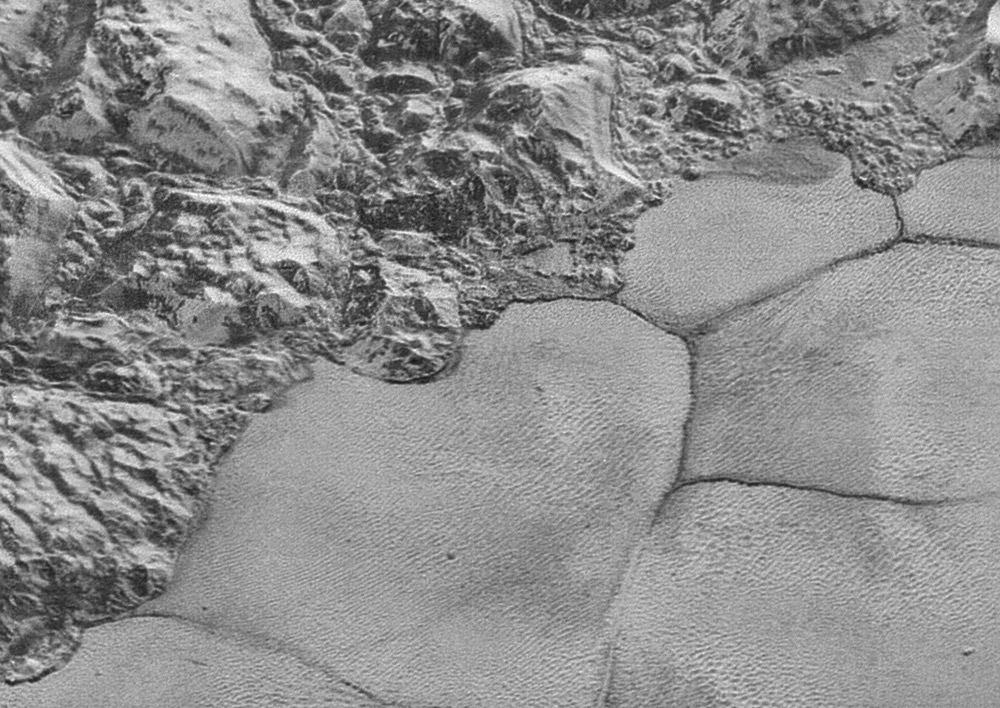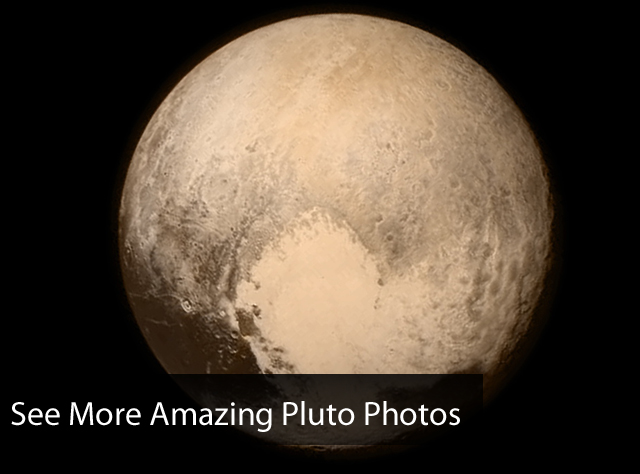
Pluto's exotic and incredibly varied landscapes dazzle in the sharpest views of the dwarf planet released to date.
The images, which feature a resolution of about 260 feet (80 meters) per pixel, were captured by NASA's New Horizons spacecraft during its epic flyby of Pluto on July 14, 2015. Mission team members have stitched the photos into a high-resolution mosaic and used them to create a stunning new video of Pluto that highlights the dwarf planet's towering water-ice mountains and nitrogen glaciers, among other exotic features.
"This new image product is just magnetic," Alan Stern, New Horizons principal investigator from the Southwest Research Institute in Boulder, Colorado, said in a statement Friday (May 27). "It makes me want to go back on another mission to Pluto and get high-resolution images like these across the entire surface."
The mosaic covers a long, roughly 50-mile-wide (80 kilometers) strip of the "encounter hemisphere" — the face of the dwarf planet that New Horizons saw during its historic flyby.
"Starting with hummocky, cratered uplands at top, the view crosses over parallel ridges of 'washboard' terrain, chaotic and angular mountain ranges, cellular plains, coarsely 'pitted' areas of sublimating nitrogen ice, zones of thin nitrogen ice draped over the topography below and dark mountainous highlands scarred by deep pits," NASA officials wrote in the same statement.

You need to zoom in on the newly released Pluto mosaic to fully appreciate the rich level of detail it provides. You can do that by checking out the full-resolution image here: http://www.nasa.gov/sites/default/files/thumbnails/image/nh-fullresolutionnoodle.jpg
New Horizons captured the images from a distance of about 9,850 miles (15,850 kilometers) on July 14, 23 minutes before the probe's closest approach to Pluto (which brought it to within 7,800 miles, or 12,550 km, of the dwarf planet's surface).
Get the Space.com Newsletter
Breaking space news, the latest updates on rocket launches, skywatching events and more!
Though the encounter took place more than 10 months ago, New Horizons is still beaming flyby data home, and likely won't be done doing so until this coming fall, mission team members have said.
New Horizons may have another flyby in its future. Stern and his colleagues have submitted a proposal to send the spacecraft — which launched in January 2006 — zooming past a small object about 1 billion miles (1.6 billion km) beyond Pluto, called 2014 MU69. If NASA approves and funds this mission extension, the encounter with 2014 MU69 would take place Jan. 1, 2019.
Follow Mike Wall on Twitter @michaeldwall and Google+. Follow us @Spacedotcom, Facebook or Google+. Originally published on Space.com.
Join our Space Forums to keep talking space on the latest missions, night sky and more! And if you have a news tip, correction or comment, let us know at: community@space.com.

Michael Wall is a Senior Space Writer with Space.com and joined the team in 2010. He primarily covers exoplanets, spaceflight and military space, but has been known to dabble in the space art beat. His book about the search for alien life, "Out There," was published on Nov. 13, 2018. Before becoming a science writer, Michael worked as a herpetologist and wildlife biologist. He has a Ph.D. in evolutionary biology from the University of Sydney, Australia, a bachelor's degree from the University of Arizona, and a graduate certificate in science writing from the University of California, Santa Cruz. To find out what his latest project is, you can follow Michael on Twitter.









